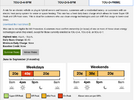howardnj
Member
myiskingI can see how some people would only be interested in how much energy the car is using while moving. But I'm trying to evaluate total cost of energy consumed to own my car. The car may be super efficient while driving but if it costs an arm and a leg to charge it and keep the battery warm while idle or sleeping then it's not really as cost effective as it is on paper. A significant expense isn't being discussed (assuming TeslaFi is right and my math is sound).
I'm not sure why you're comparing to ICE cars. I own a Model Y, you don't need to convince me of the virtues of electric vs ICE. I'm simply trying to figure out how much my MY is costing me in energy costs. And there's a cost that I wasn't anticipating because I was only focused on energy consumed while driving.
FWIW I closely track my expenses and MPG with my present 2016 Infiniti Q70.
I went back to my spreadsheet to track how much I spent in gasoline over the most recent 3685 mile period.
My total spent on gasoline was $580.24.
So it appears that the cost of running and charging an EV is much less.
My EDD was moved up today from July 2022 to June 22



